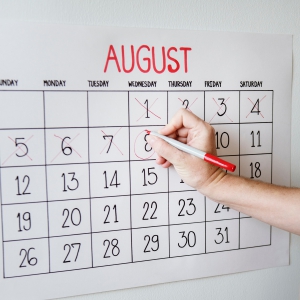In last month’s blog, we covered one of the most important financial life lessons your child can learn: how to start and keep a budget. In this lesson, we’re going to build on the steps in our previous lesson to help your child see the benefits of making – and sticking to – a budget, with a little “fast forward” exercise.
A fast forward example can help explain the “why” of budgeting
In a sense, we’re going to “fast forward” the impact of their choices to the here and now, and show your child(ren) the reasons why keeping a budget is so important.
We’ll also be checking to see if the goals they set in their initial plans were realistic, or perhaps underwhelming.

How to show the impact of smart budgeting and goal setting (for kids of all ages)
We are going to assume that we will “fast forward” a full year. If you’re giving your child an allowance already, include it in the following scenario.
- Starting with next month, write out the next year month-by-month on a sheet of paper.
- Under each month, write how much your child will receive that month.
- If it’s December, maybe write the amount in gift cards they may receive (make sure to let them know this is just a simulation and not a promise of things to come, ha!)
- You can do the same for their birthday month.
- These times are special for kids and the lesson may resonate more if you include these things, but if you choose not to, the other steps still apply.
- Again, be sure to include any regular payments of allowance, as you go along, if applicable.
Now that you have the full year of potential income written out, have your child go through each month and follow their budget and goals. Tip: You may want to use “Monopoly money” or create your own faux currency to make this a more fun, hands-on process as you go through the exercise.

Questions to Ask
By the end of the fictional “year,” and after your child’s faux currency is spent or saved, ask him or her the following questions:
- How does your budget look / where do you stand?
- Were you able to save enough money, according to your budget?
- Do you feel you had enough to spend, i.e. “live” well?
- Were you expecting to have more money, or more income? (If so, what could you do to increase your income such as start a cupcake business?)
- Do you feel overwhelmed? Or underwhelmed? Are you happy with how things turned out?
Parents: why this “fast forward” exercise is important for you
Often, we’re excited at the beginning of a big plan, when we’re setting our goals and aiming high. Over time, we sometimes begin to lose motivation — this happens as we slowly realize that, perhaps, the goals we set simply weren’t the right ones.
So — if you were wondering what the point of this exercise was, here it is: to stress-test the goals your child set in lesson #26! They might have been too lofty, or unrealistic, or simply unattainable. Or, perhaps they were underwhelming!
Once your child learns how to set an attainable goal (and what that looks like) it will be easier for them to maintain their motivation for budget setting and maintaining.
Random Fun!
Have each kid write a letter to their future 30-year old self. Include at least one finance goal they hope to have attained by that time. Have them read their letter out loud after dinner.
June 2019





